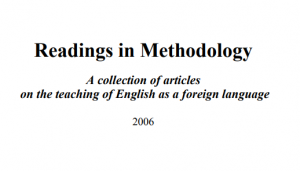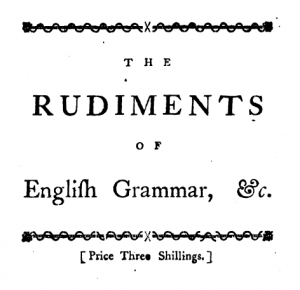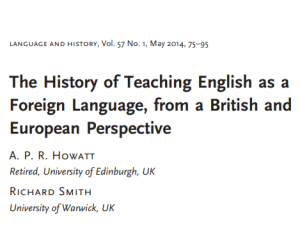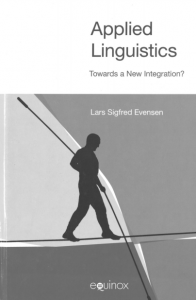PDF #71 – A collection of articles on the teaching of English as a foreign language 2006

Are teachers born or made? – Penny Ur
Language learning in the classroom – Donn Byrne
Second language acquisition research and task-based instruction – Peter Skehan
A task-based approach to oral work – Peter Moor
Some misconceptions about communicative language teaching – Geoff Thompson
Method, antimethod, postmethod – B. Kumaravadivelu
Ten basic propositions – Marion Williams and Robert L. Burden
Breaking taboos – Guy Cook
How to be a boring teacher – Luke Prodromou
one of the Articles on the teaching of English:
Are teachers born or made?
Penny Ur
Plenary Talk, IATEFL Conference Brighton 1997.
IATEFL Newsletter 1998.
The phrase ‘a born teacher’ is not usually meant to be taken literally. People who use it do not seriously mean that someone is born with a certain teaching DNA configuration in their genes. They are, rather, referring to stable personality characteristics, resulting from a combination of innate and environmental influences, that the teacher brings to their professional practice and that produce something that looks like a natural bent for teaching.
Is there such a thing?
What evidence do we have for the existence of ‘born teachers’?
The existence of the phrase
First there is the actual existence of the phrase as an immediately recognisable collocation in English. Compare born engineer or born scientist. The mere fact that the expression is a recognisable cliché that slides easily off the tongue implies that the concept is popularly accepted and based on folk wisdom.
What the professionals say
But beyond folk wisdom, what do professionals think? I asked two groups of teachers, a group of 20 novices and a group of 25 experienced, competent professionals whether they thought there was such a thing, and if so, whether they were themselves ‘born teachers’. The inexperienced teachers were almost unanimously positive in their answers to both questions. The experienced teachers were more cautious, though still a majority (80%) thought there was indeed such a thing; but only 32% thought they were definitely born teachers themselves, 28% said they weren’t and 40% were uncertain. So in general: yes, teachers think there is such a thing.
And many more, just like this one. I am also discussing some of the topics of this site in my Youtube channel.






